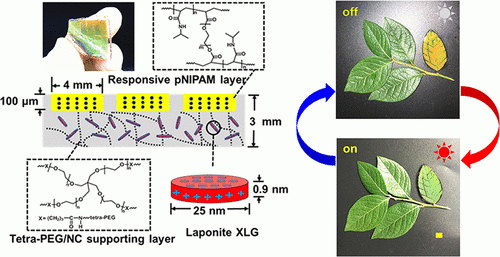It's long known that creatures such as chameleons and neon tetra fish can alter their colors to camouflage themselves, attract a mate or to frighten a predator. In many languages, the reference to chameleon traits is in vogue but now scientists have successfully replicated similar traits in "Smart skins" that they developed using these techniques.
The artificial "smart skins" were developed by scientists taking cue from the chameleon's playbook to develop a flexible skin that changes its color in response to heat and sunlight. But the hues of chameleon skin rely not on pigments but on arrays of tiny structures known as photonic crystals.
Light reflection
When light reflects from these microscopic surfaces and interferes with other beams of reflected light, the color is produced and the hue changes when the distance between photonic crystals varies. In chameleons, it changes whenever the creature gets tensed or whenever it relaxes its skin.
Following suit, scientists have embedded photonic crystals in flexible materials such as hydrogels, and changed their colors by contracting or expanding the material but the limitation was that large fluctuations in size can strain the materials and cause them to buckle.
Chameleon skin
Overcoming this problem, Khalid Salaita from the Emora University, Atlanta and his colleagues wanted to take a closer look at chameleon skin to accommodate what they said was a strain-accommodating smart skin. By watching time-lapse images of chameleon skin, the researchers noticed that only a small fraction of skin cells actually contain photonic crystal arrays, while the rest are colorless.
The team found out that the colorless cells actually help accommodate the strain when the photonic crystals contract and expand. Inspired by this finding, the researchers patterned arrays of photonic crystals in a hydrogel. Then they embedded these arrays in a second, non-color-changing hydrogel that acted as a supporting layer.

When heated, the resulting material changed color but remained the same size. In fact, this smart skin also altered its hue in response to natural sunlight, similar to how a chameleon or a tetra fish changes its color. The projects received funding from the US Defense Advanced Research Projects Agency (DARPA) Biological Technologies Office and the National Institutes of Health.
"In contrast to conventional accordion-type PC responsive hydrogels, strain-accommodating smart skin (SASS) maintains near-constant volume during chromatic shifting. Importantly, SASS materials are stretchable, amenable to patterning, spectrally tunable, and responsive to both heat and natural sunlight," said researcher in their paper that was published in the journal ACS Nano.
"We demonstrate examples of using SASS for biomimicry. Our strategy, to embed responsive materials within a mechanically matched scaffolding polymer, provides a general framework to guide the future design of artificial smart skins," they said explaining the uses of the new material that may revolutionize the applications in camouflage, signaling and anti-counterfeiting, and other defence applications.









